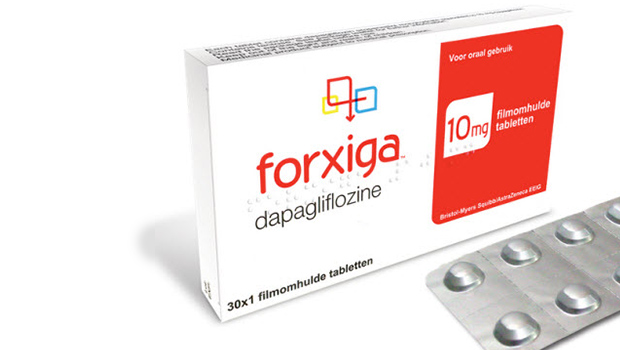Investigational NASH Diagnostic Tool Could be a Game-Changer for the T2D Community
New, noninvasive diagnostic tool is being developed by GENFIT to detect NASH, a deadly fatty liver disease that affects 30% of people with diabetes

NASH is a shockingly common disease that affects almost one-third of all people with type 2 diabetes. As it progresses, it causes irreversible liver damage and can lead to cirrhosis and to the development of multiple cancers. And healthcare professionals expect it to become the number one reason for liver transplants in the United States within the next couple of years.
Yet, most of those who have NASH will have no idea until it is too late.

GENFIT, a biopharmaceutical company headquartered in France with offices in Boston, hopes to change that with the development of a new diagnostic tool that could detect this deadly disease while it is still in its early stages.
We spoke with Dr. Carol Addy, Chief Medical Officer at Genfit to learn more.
What is NASH?
Nonalcoholic steatohepatitis, or NASH, is a form of fatty liver disease that causes severe inflammation and fat to build up in liver tissue. If left untreated, this inflammation will progress to fibrosis or scarring of the liver tissue. Severe cases can lead to cirrhosis of the liver, liver failure, liver cancer, and increased cardiovascular events.
NASH is common in both obese populations and in those with type 2 diabetes. It is estimated that about 30% of T2Ds suffer from the condition. Those of Hispanic descent are most strongly affected, with Caucasians close behind.
The prevalence of NASH is expected to grow by 65% over the next couple of decades, making this disease a major factor in rising healthcare costs.
Until the very late stages, this disease is silent.
Those suffering from it aren’t likely to notice, and if they do have symptoms they are likely to be nonspecific to the disease and difficult to diagnose.
Obvious symptoms don’t usually show until cirrhosis has already begun.
Given this and the prevalence of NASH in the type 2 community, you might expect doctors to routinely test for this disease in T2D patients. Unfortunately, the most accurate and widely used diagnostic tool for NASH is an invasive and costly liver biopsy.
But, thanks to GENFIT, that is all about to change.
Investigational Diagnostic Tool Could Greatly Improve Outcomes
Liver biopsies are costly, invasive, difficult to schedule, and can lead to multiple complications. But more than anything, they are impractical and unattainable for most diabetics who aren’t showing any symptoms of liver failure.
Unfortunately, by the time those symptoms do arise, it may already be too late for treatment.
Currently, the only effective treatment for reversing early-stage NASH is diet, exercise, and weight loss. For those who are diagnosed too late, the only option is a liver transplant. But the number of patients on the transplant list and the odds of getting a match mean that even this isn’t a guaranteed cure.
A new diagnostic tool currently in the clinical trial phase aims to change how NASH is detected and when it is treated. GENFIT’s NIS4 patented algorithm uses four biomarkers to identify patients with both NASH and significant fibrosis who would benefit from early intervention and treatment.
Unlike an expensive and painful liver biopsy, this diagnostic tool requires only a simple blood draw that can be completed at the doctor’s office or the lab. Meaning, this test could easily be incorporated into the yearly blood panels already recommended by most endocrinologists.
Looking to the Future
This new tool has been rolled out in the clinical research arena through a partnership with LabCorp/Covance. If it is approved, the fight against NASH would transform from reactionary to preventative. Instead of discovering the disease just in time to put the patient on the transplant list, healthcare providers could track its progression and implement simple lifestyle changes to prevent further liver damage.
This test is currently in use by investigators in clinical trials and is expected to be available to all doctors around the world as early as 2020. But it isn’t the only major advancement expected next year in the fight against NASH.
In addition to their new diagnostic tool, top-line interim results from Genfit’s Phase 3 Nash drug therapy trial are also expected to be announced early next year. Since current treatment relies solely on lifestyle changes, the integration of more targeted therapies could have a profound impact on outcomes for those unknowingly suffering from this condition.
GENFIT isn’t the only company that has recognized the importance of finding treatment options for this condition. Novartis and Gilead currently have NASH drugs in the trial stage, as well.
This is an exciting time but, as we await the release of both the NIS4 diagnostic and the new set of NASH therapies, the most important thing we can do is educate one another.
Despite its prevalence, NASH isn’t well known, even in those communities that it hits the hardest. If you or someone you know has diabetes or struggles with obesity, it is worth educating yourself and them about this underreported condition. And most importantly, talk to your doctor about your screening options and potential options for the future.
While the field of NASH diagnostics and treatments may be shockingly limited right now, that is all going to change in the very near future. You should be ready.





